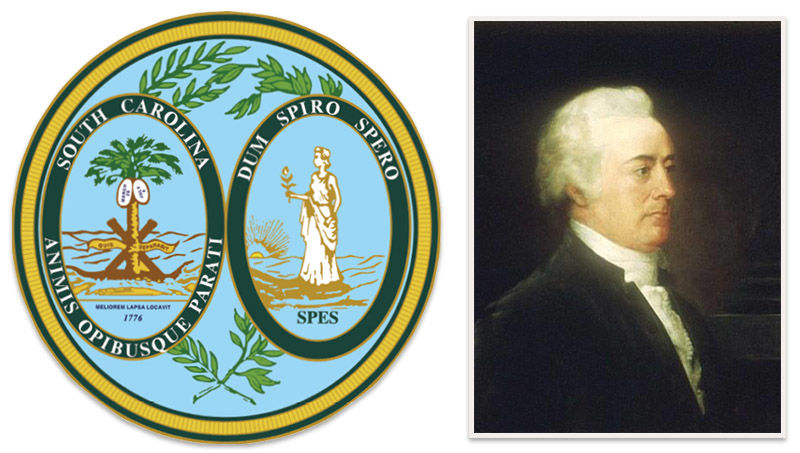
John Rutledge (pictured above, right)
“March 26, 1776”: While it does not roll off the tongue as grandly as “July 4, 1776,” the dates are nevertheless linked—not just chronologically, but on South Carolina's official state seal—dates emblazoned on two elliptical shields to the left and right of our state symbol, the palmetto tree.
Before the Declaration of Independence was signed in Philadelphia by representatives of the 13 colonies, statesmen met in Charleston to draft a constitution to govern South Carolina until the “unhappy differences” with Great Britain could be healed. On the morning of March 26, the Provincial Congress adjourned, and that afternoon the first General Assembly of South Carolina convened with the same gentlemen presiding. John Rutledge was elected president and Henry Laurens, vice president.
Soon after taking office, President Rutledge and his Privy Council were authorized “to design and cause to be made a Great Seal of South Carolina.” But the most pressing order of business was defense. Rutledge saw to the erection of a palmetto log fort on Sullivan’s Island to defend against a British attack by sea. He refused to let Charles Lee, the commander of the Continental Army, order William Moultrie to abandon the fort—a stance that saved the city and earned him the nickname “Dictator John.” Victory at the fort came on June 28, 1776. While Carolina Day is commemorated yearly and the Fourth of July brings fireworks, the March date goes by unmarked. Yet, it’s just as important—the day South Carolina began to determine her own destiny.